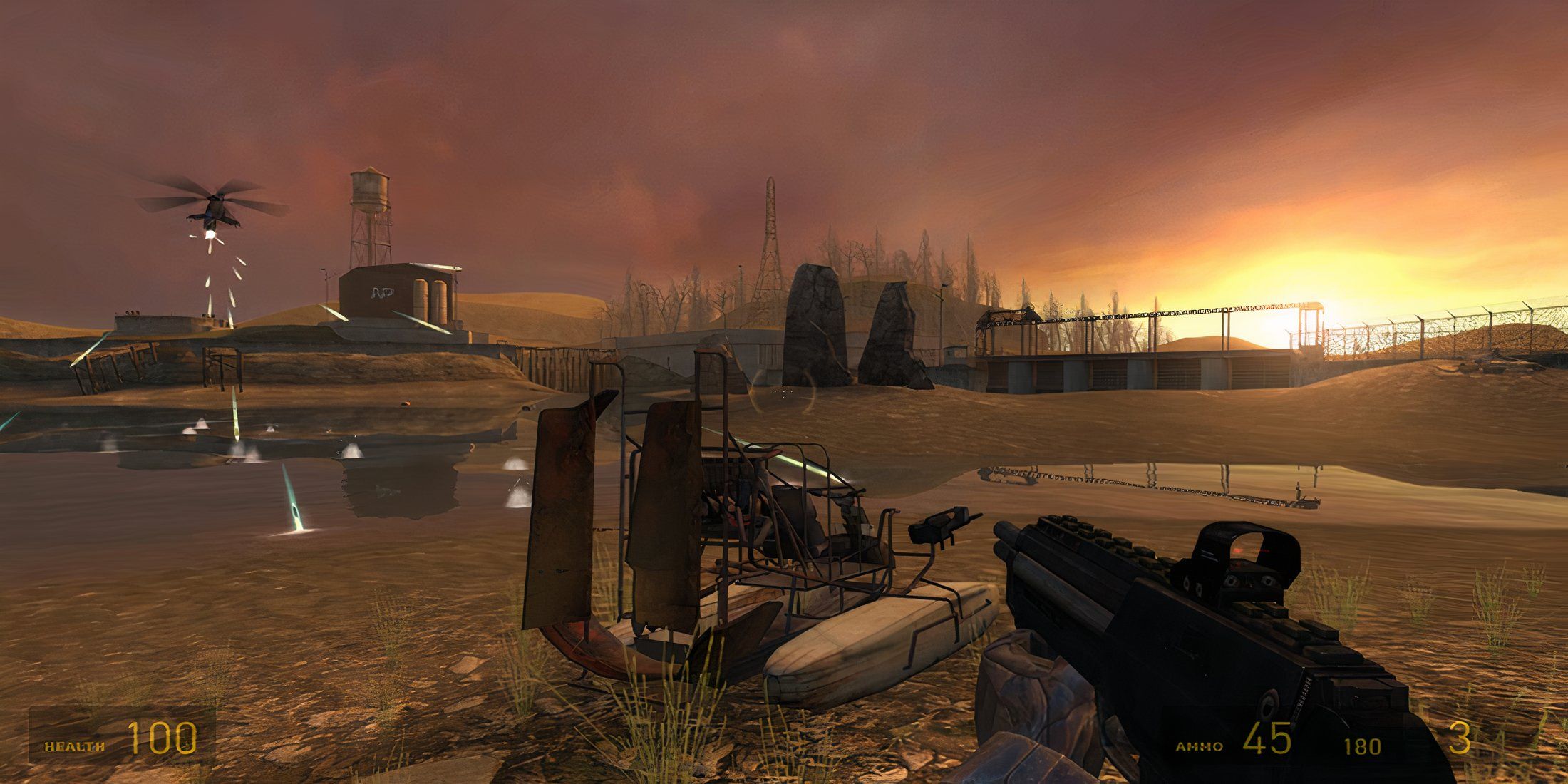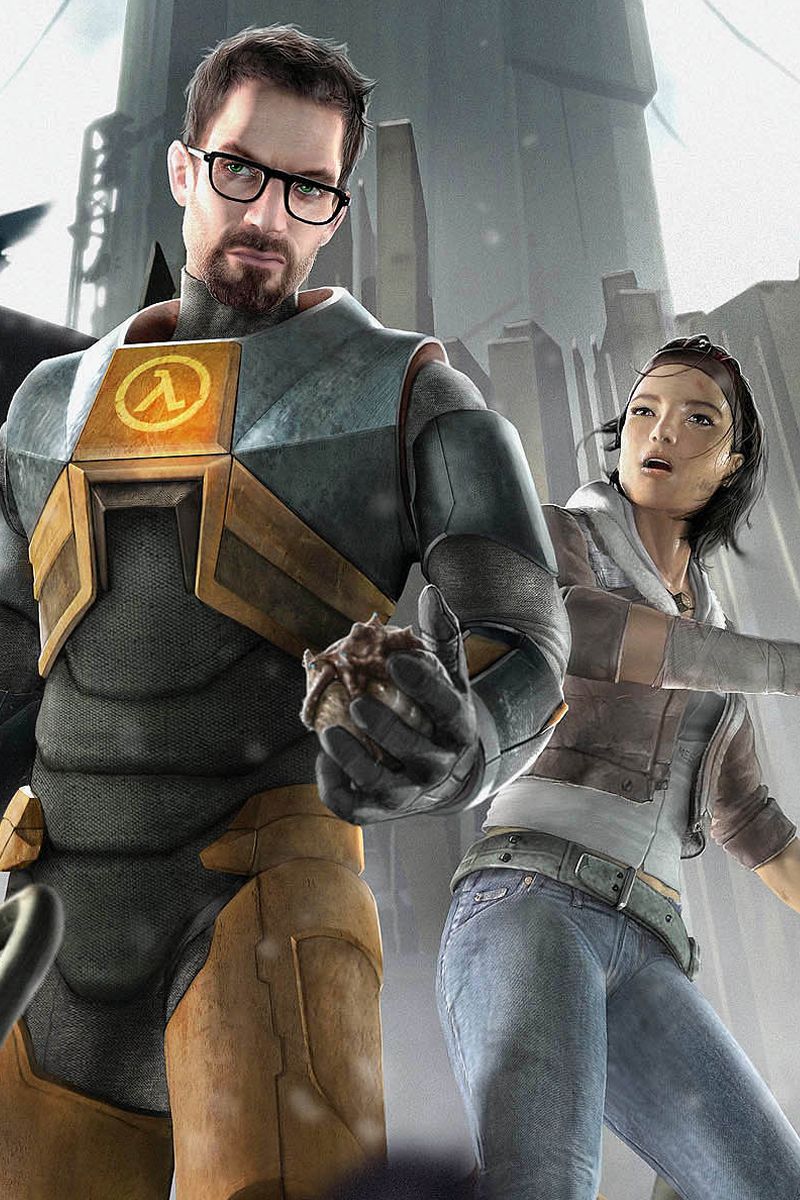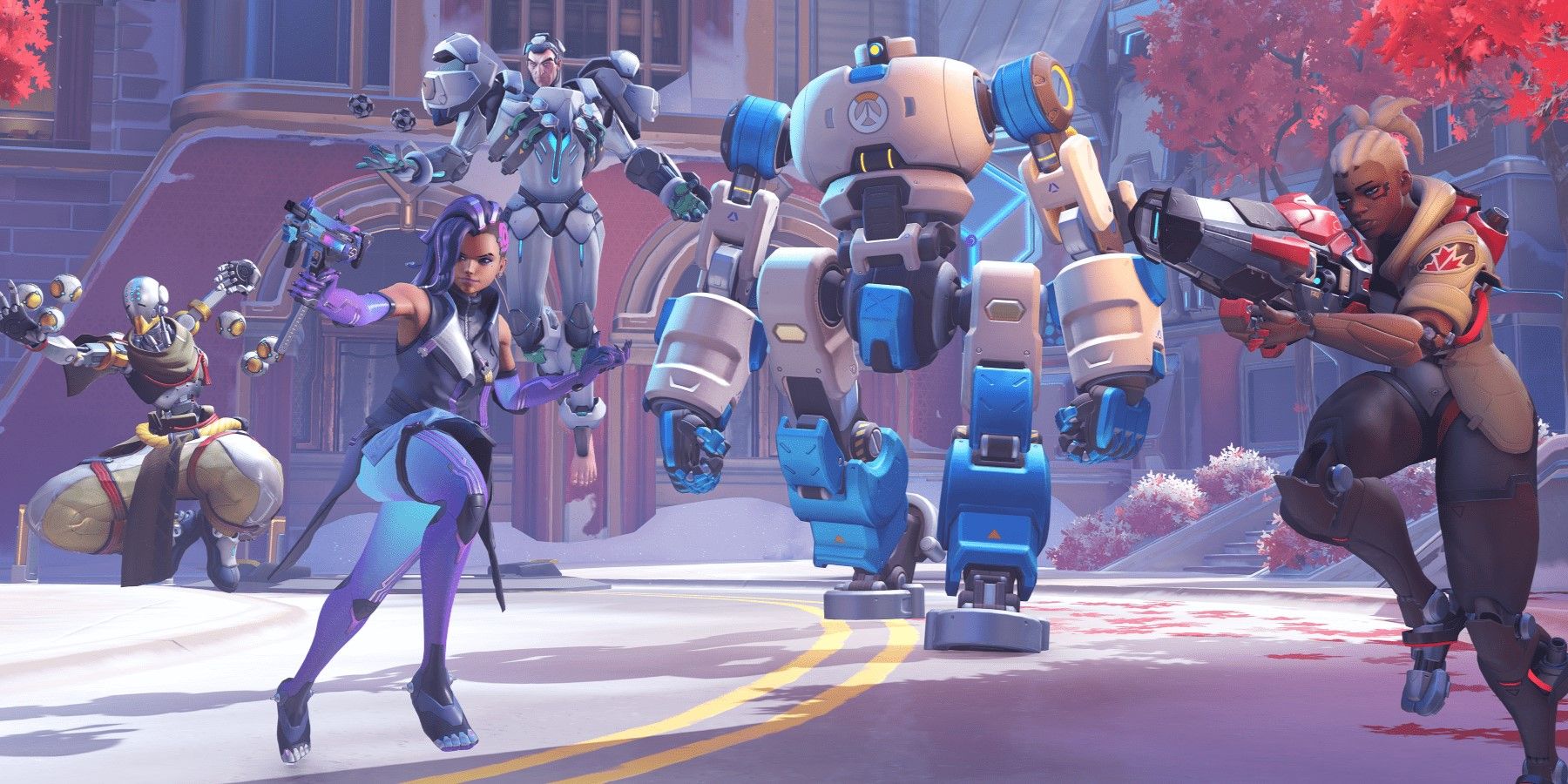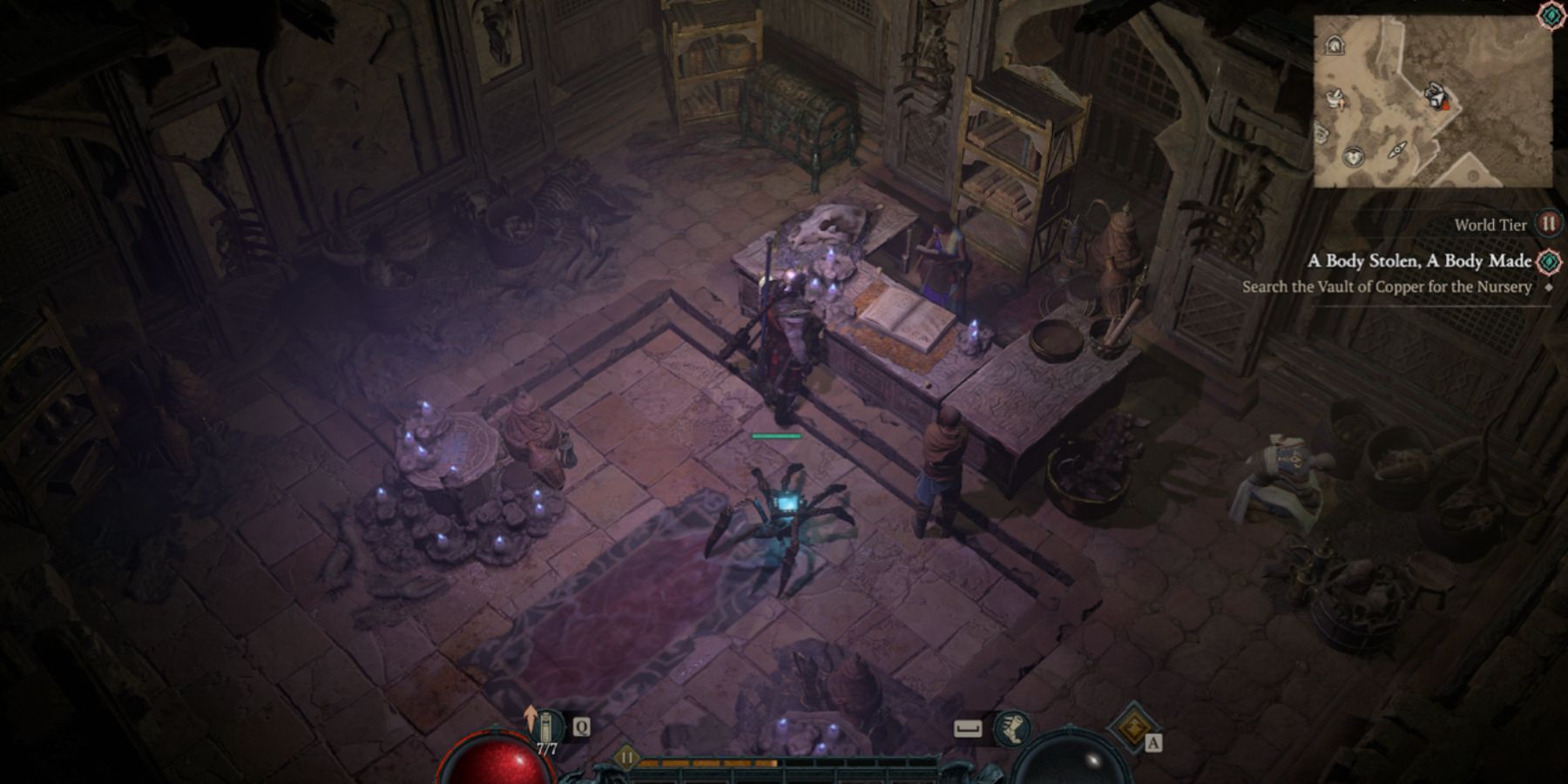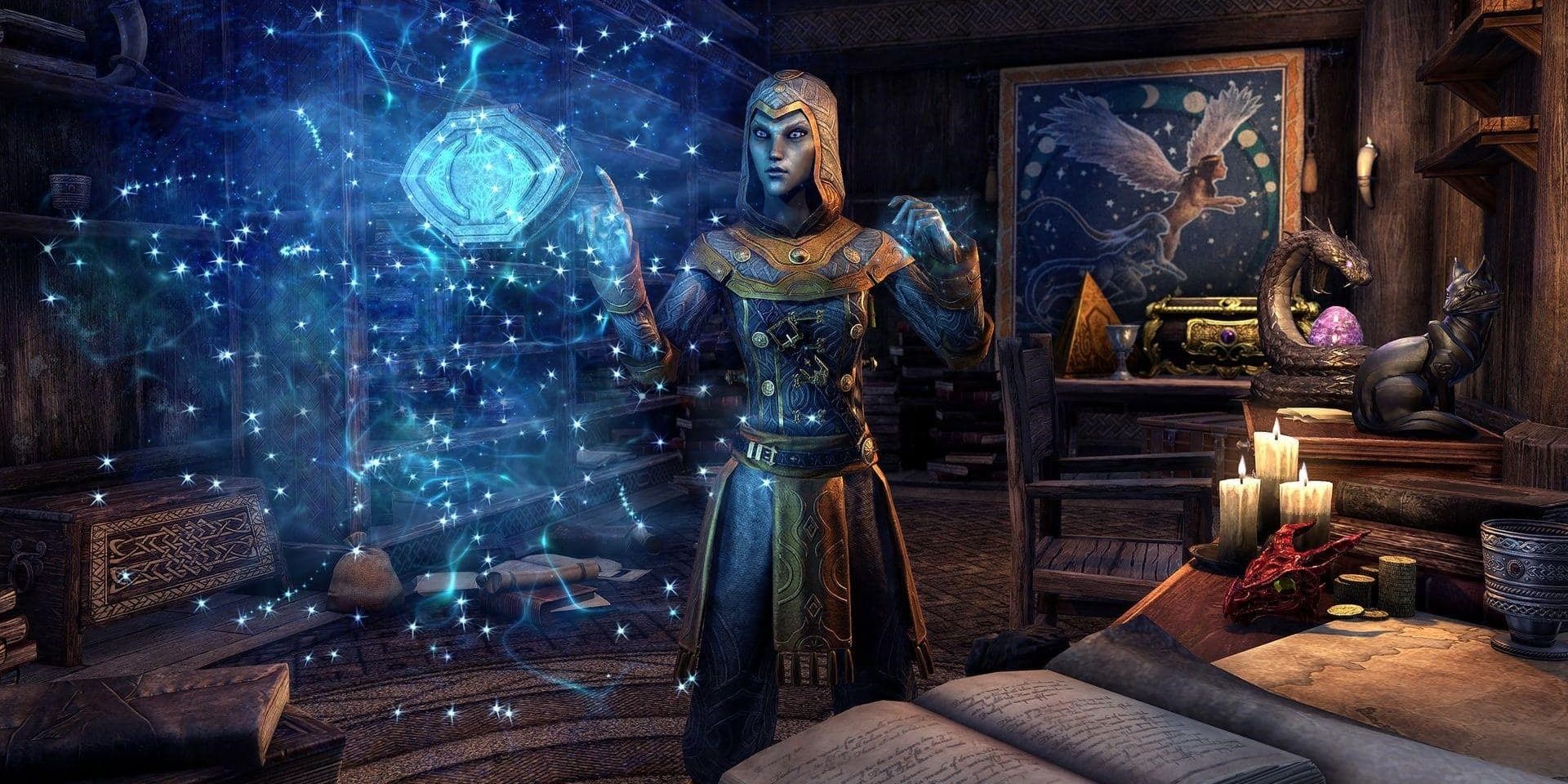Half-Life 2 turns twenty today. Released on November 16, 2004, Valve’s followup to its groundbreaking 1998 original was the quintessential sequel, built upon what was already a recognized landmark title in gaming. Half-Life 2 went even further, and became an arguably greater touchstone itself. With the seamless way it continued the narrative, fleshed out its memorable setting and characters, and fine-tuned gameplay, Half-Life 2 earned multiple accolades, achieving the status of a widely beloved title, and its legacy truly cannot be denied.
Among its improvements, one of the most impactful was Half-Life 2‘s expansion of world building and the accompanying innovations in level design that elevated it. While bigger doesn’t always equate to better, Half-Life 2‘s advancements in the first-person shooter formula and the approach it took to opening up its game space allowed its artistic vision to shine through while keeping its core mechanics engaging. This was more significant in that it was something that hadn’t really previously been attempted to the same degree in the genre at the time. Upon release and to this day, Half-Life 2‘s semi-open world stands as one of the best implementations that a wide range of titles, both in the FPS and other genres, have since taken many cues from.
Related
10 Games That Are 20 Years Old But Still Worth Playing
From World of Warcraft to Halo 2, these top-notch games from the past still deserve your time and attention.
Half-Life 2’s Semi-Open World Design Indelibly Informed the FPS Genre, 20 Years Ago
Half-Life 2 Was the Natural Progression From the First Entry’s Scope
Fittingly for this retrospective, Half-Life 2 opens 20 years after the events of the first. The unforeseen consequences of his actions see protagonist Gordon Freeman awakening to a dystopian world controlled by the alien forces of the Combine and the surviving human elite. Through this framework, Half-Life 2 thrusts players into a setting that has changed in significant ways. As impressive as Half-Life was, it was largely confined to a single locale in the isolated Black Mesa Research Facility. The sequel immediately sets up a much grander world stage, and builds to letting players loose in it.
Half-Life 2‘s improved graphics also helped with immersion, as City 17 immediately feels even more believably alive and racked with tension than Black Mesa. While it starts out similarly in smaller, contained areas, Half-Life 2‘s initial spaces also give players room to poke around and take in the scenery, which adds to the engrossing atmosphere and sense of escalation. Once fans are through the early sections, they are introduced to a much bigger sandbox that showcases the level of detail and measured approach Valve took to presenting its world. Half-Life 2 contains a near perfect blend of exploration interspersed with intense and well-placed combat encounters, and on both fronts is an organic evolution from the original’s vision.
6:40

Related
10 Best First-Person Shooters Of All Time
Time to shoot ’em up… these games are the best of the best when it comes to FPS options.
How Half-Life 2 Raised the Bar for First-Person Shooter Level Design, 20 Years Ago
Half-Life 2’s Environments Were Equally Diverse and Enjoyable
While the opening hour or so sees players going through a series of mostly linear levels, as the story gradually ramps up in scope, subsequent regions follow suit. After clearing the more traditional layouts of City 17’s crumbling apartments and streets, once fans reach Highway 17 and the surrounding Wasteland, Half-Life 2‘s world significantly opens up. The environmental storytelling showed much more than it told by letting players comb through the expansive ruins and seeing the devastation that the Combine’s grip on Earth had wrought.
One of the most famous locations and best examples of its level design is Half-Life 2‘s Ravenholm. The maze-like nature of the town and it being infested with deadly Combine creatures along with Father Grigori’s traps make it an impressive and memorable section on its own. But it’s an excellent microcosm of how Half-Life 2‘s semi-open world approach feeds into its strong sense of place and storytelling, while giving players more practical options to navigate and approach combat encounters throughout.
This semi-open structure tied neatly into other aspects as well, as the larger areas and added verticality provided more interesting ways to incorporate Half-Life 2‘s physics puzzles. The dynamic of discovery and danger was ever-present as players trekked across its varied maps, with new enemies, like the Antlions, surprising unsuspecting fans and presenting fresh challenges to overcome while advancing the exciting narrative. Half-Life 2‘s levels were ambitious, designed and presented in ways other contemporaries simply weren’t considering. The effort paid off in full, and later games took close notice of how Half-Life 2 pushed the envelope in this area.
Half-Life 2’s Level Design Continues to Resonate and Cascade Through Gaming
Two decades later, Half-Life 2‘s influence, especially its innovations in expanding and improving on FPS level design, can be seen across the gaming landscape. Its commitment to practical and thoughtful design in this area made each of its levels distinct, complementing its other elements. Valve’s work on Half-Life 2 in this regard resulted in a game that changed and transcended genre norms, and after which could not be ignored in how effective it was in creating an outstanding experience.
Thanks to its intelligently crafted approach, the balance that Half-Like 2 struck in its level design to seamlessly merge with storytelling and gameplay provided a blueprint that numerous games would take inspiration from, both in the years immediately following its success and well beyond. Half-Life 2 set a new standard for level design that was emulated and iterated on afterward, and its footprint can clearly be seen in other notable games like BioShock, Dishonored, Crysis, and many more that have come since. Half-Life 2 remains a timeless title and a masterclass in informed level design; one that still holds valuable lessons on the best methods to utilize and integrate them to produce a supremely engaging game that expands boundaries and expectations.

/cdn.vox-cdn.com/uploads/chorus_asset/file/25697397/STK071_APPLE_N.jpg)
